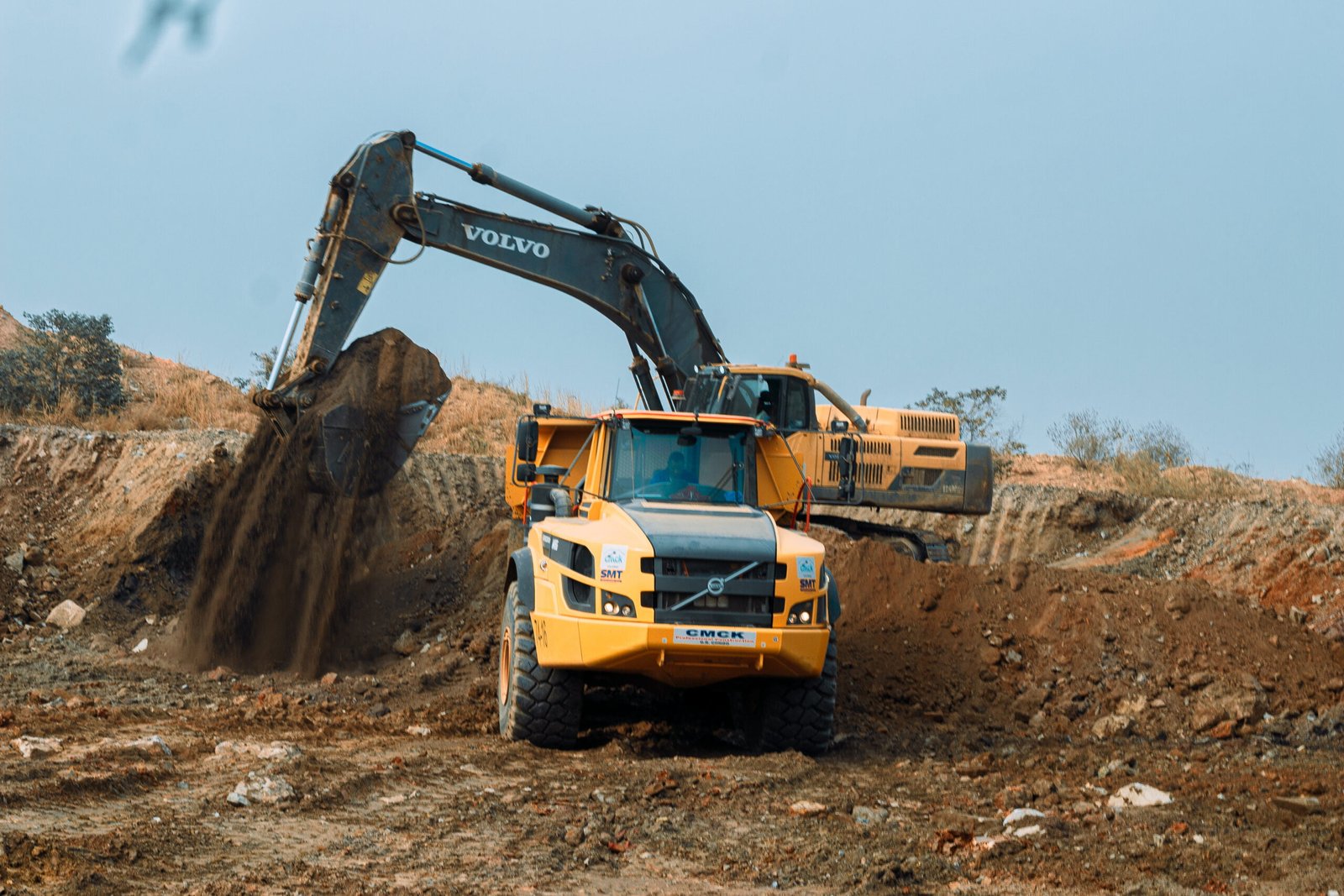Excavation and Earthworks: A Comprehensive Guide
Excavation and earthworks are essential components of civil engineering. They involve the process of moving earth, rock, or other materials with tools, equipment, or explosives. Earthworks can be classified by the purpose, such as footing excavation, borrow excavation, or underground excavation. Typical earthworks include railway beds, land grading to reconfigure the topography of a site, or to stabilize slopes. The excavation process involves loosening and taking out materials, leaving space above or below ground. Heavy construction equipment is usually used due to the amounts of material to be moved, which can be up to millions of cubic meters.
In this article, we will explore the different types of earthworks, the equipment used, safety considerations, environmental impact, and more.
Types of Earthworks
There are several types of earthworks, each with its own unique characteristics and purposes. Some of the most common types of earthworks include:
-
Footing excavation: This type of excavation is used to create a foundation for a building or structure. It involves digging a hole in the ground and filling it with concrete to create a solid base.
-
Borrow excavation: This type of excavation is used to obtain soil or other materials from one location to be used in another. It is often used in road construction or other large-scale projects.
-
Underground excavation: This type of excavation is used to create tunnels, mines, or other underground structures. It requires specialized equipment and techniques to ensure safety and stability.
“If you’re looking for a partner you can trust, you’ve come to the right place. We have the expertise to meet all your expectations.”
Ryke Skinner
Equipment Used
Heavy construction equipment is typically used for excavation and earthworks due to the large amounts of material that need to be moved. Some of the most common types of equipment used include:
-
Bulldozers: These are large, powerful machines that are used to move large amounts of earth and other materials.
-
Backhoes: These machines are used to dig trenches, foundations, and other types of excavations.
-
Dragline excavators: These machines are used for large-scale excavation projects, such as mining or quarrying.
Safety Considerations
Excavation and earthworks can be dangerous if proper safety precautions are not taken. Some of the most important safety considerations include:
-
Training: All workers involved in excavation and earthworks should receive proper training on the equipment and techniques used.
-
Protective gear: Workers should wear appropriate protective gear, such as hard hats, safety glasses, and steel-toed boots.
-
Inspections: Equipment should be inspected regularly to ensure that it is in good working condition.
Environmental Impact
Excavation and earthworks can have a significant impact on the environment if not done properly. Some of the most important environmental considerations include:
-
Erosion control: Measures should be taken to prevent erosion and sedimentation during excavation and earthworks.
-
Waste management: Proper waste management techniques should be used to minimize the amount of waste generated during excavation and earthworks.
-
Habitat protection: Excavation and earthworks can disrupt habitats and ecosystems. Measures should be taken to minimize this impact.
Conclusion
Excavation and earthworks are essential components of civil engineering. They involve the process of moving earth, rock, or other materials with tools, equipment, or explosives. By understanding the different types of earthworks, the equipment used, safety considerations, and environmental impact, we can ensure that excavation and earthworks are done safely and responsibly.


I was reading some of your articles on this internet
site and I believe this web site is very instructive!
Keep posting.Raise your business
Thank you, Ryke, for this comprehensive overview of excavation and earthworks. Your detailed insights on different excavation types, essential equipment, safety protocols, and environmental considerations provide invaluable guidance for industry professionals. This is an excellent resource for ensuring excavation projects are executed efficiently and responsibly.
“Digging Deep! 🏗️ Discover the hidden dangers, cutting-edge equipment, and shocking environmental impact of excavation and earthworks! 🌍⚠️ #ConstructionSecrets”
In my experience, ernestopro.com offers exceptional solutions for excavation and earthworks projects. Their comprehensive approach and professional service ensure that all safety and environmental considerations are covered, resulting in smooth project execution. I highly recommend their expertise to clients seeking reliable and efficient earthworks services. Their team is proactive, knowledgeable, and committed to delivering quality results.